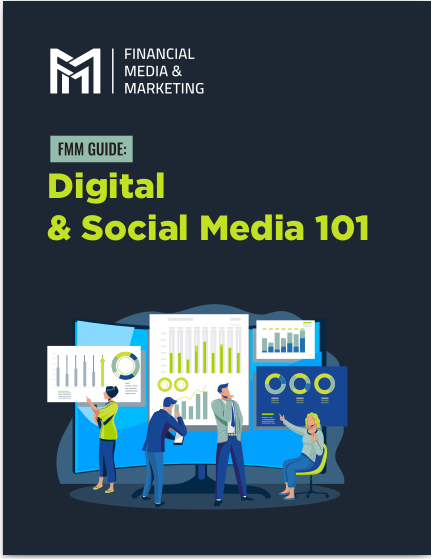Key Takeaways
- Effective website design is crucial for financial advisors to enhance client engagement and improve user experience.
- Prioritizing user-friendly navigation, mobile optimization, and clear calls to action can significantly increase client interaction and satisfaction.
How Financial Advisors Can Use Website Design to Enhance Client Engagement
In the digital age, a well-designed website is essential for financial advisors to attract and retain clients. An engaging website not only reflects professionalism but also serves as a powerful tool to build trust and foster relationships. This article explores six key strategies financial advisors can use to enhance client engagement through effective website design.
Prioritize User-Friendly Navigation
User-friendly navigation is fundamental to ensuring visitors can easily find the information they need. A website with intuitive navigation improves the user experience and encourages clients to explore your services further.
Simplify the Menu Structure
A cluttered menu can overwhelm visitors and make it difficult for them to locate relevant information. Simplify your menu structure by categorizing content logically and limiting the number of menu items. Use clear, concise labels that accurately describe the content within each section.
Implement Breadcrumb Navigation
Breadcrumb navigation helps users understand their location within your website and easily backtrack to previous pages. This feature is particularly useful for websites with multiple levels of content, such as blogs or resource libraries.
Use a Search Function
Including a search bar on your website allows users to quickly find specific information. Ensure the search function is prominently placed and easy to use, offering suggestions and filters to improve search accuracy.
Ensure Consistent Layout
Maintain a consistent layout across all pages to help users familiarize themselves with your website’s structure. Consistency in design elements, such as headings, fonts, and colors, creates a cohesive look and enhances navigability.
Optimize for Mobile Devices
With an increasing number of users accessing websites via mobile devices, optimizing your website for mobile compatibility is crucial. A mobile-friendly website ensures that clients can engage with your content seamlessly, regardless of the device they use.
Responsive Design
Implement a responsive design that automatically adjusts the layout and content based on the screen size. This approach ensures that your website looks and functions well on smartphones, tablets, and desktops.
Simplify Mobile Navigation
Simplify navigation for mobile users by using collapsible menus, known as “hamburger menus,” and large, tappable buttons. Avoid using small text links that are difficult to tap accurately on a touchscreen.
Optimize Load Times
Mobile users are often on the go and may have limited bandwidth. Optimize your website’s load times by compressing images, minimizing code, and leveraging browser caching. A fast-loading website enhances user experience and reduces bounce rates.
Test on Multiple Devices
Regularly test your website on various mobile devices and browsers to ensure compatibility. This practice helps identify and resolve any issues that may affect the mobile user experience.
Use Clear and Compelling Calls to Action
Clear and compelling calls to action (CTAs) guide users towards taking desired actions, such as scheduling a consultation, signing up for a newsletter, or downloading a resource. Effective CTAs are essential for converting website visitors into engaged clients.
Make CTAs Prominent
Ensure that CTAs are prominently placed on your website, using contrasting colors and bold fonts to make them stand out. Position CTAs above the fold, where they are immediately visible without the need to scroll.
Use Action-Oriented Language
Use action-oriented language that clearly communicates the benefits of taking the desired action. Phrases like “Get Started,” “Schedule a Free Consultation,” or “Download Your Free Guide” are specific and motivate users to act.
Limit the Number of CTAs
While it’s important to include CTAs, avoid overwhelming users with too many options. Focus on one primary CTA per page and support it with secondary CTAs if necessary. This approach reduces decision fatigue and increases the likelihood of conversion.
Test and Optimize CTAs
Regularly test different versions of your CTAs to determine which ones are most effective. Experiment with variations in wording, color, size, and placement, and use analytics to track performance and optimize accordingly.
Incorporate Client Testimonials and Case Studies
Client testimonials and case studies are powerful tools for building trust and credibility. They provide social proof that can reassure potential clients of your expertise and the positive impact of your services.
Display Testimonials Prominently
Feature client testimonials prominently on your website, such as on the homepage, service pages, and dedicated testimonial sections. Use high-quality images of clients (with their permission) to add authenticity and credibility.
Highlight Key Quotes
Highlight key quotes from testimonials that emphasize specific benefits and positive outcomes of your services. Use larger fonts or pull quotes to draw attention to these impactful statements.
Create Detailed Case Studies
Develop detailed case studies that outline the challenges clients faced, the solutions you provided, and the results achieved. Case studies should be well-structured, with clear headings and visuals, such as charts and graphs, to illustrate outcomes.
Include Video Testimonials
Video testimonials can be particularly engaging, as they allow clients to share their experiences in their own words and convey emotion. Embed video testimonials on your website and promote them through social media channels.
Create Engaging and Informative Content
Engaging and informative content is essential for attracting and retaining visitors. High-quality content demonstrates your expertise and provides value to potential clients, encouraging them to explore your services further.
Develop a Content Strategy
Develop a content strategy that aligns with your target audience‘s needs and interests. Identify key topics related to financial planning, investment strategies, retirement planning, and other relevant areas. Create a content calendar to ensure consistent publication.
Write Blog Posts and Articles
Regularly publish blog posts and articles that provide insights, tips, and updates on financial topics. Use clear and concise language, and break up text with headings, bullet points, and images to enhance readability.
Offer Downloadable Resources
Create downloadable resources, such as eBooks, guides, checklists, and templates, that provide in-depth information on specific topics. Offer these resources in exchange for visitors’ contact information to generate leads.
Incorporate Visuals and Multimedia
Enhance your content with visuals and multimedia elements, such as images, infographics, videos, and podcasts. Visual content is more engaging and can help explain complex financial concepts more effectively.
Implement Secure and Easy-to-Use Contact Forms
Contact forms are a crucial element of client engagement, allowing potential clients to easily get in touch with you. A well-designed contact form can improve user experience and increase conversion rates.
Keep Forms Simple
Keep your contact forms simple and only request essential information. Long and complex forms can discourage users from completing them. Typically, name, email address, and a brief message field are sufficient.
Ensure Mobile Compatibility
Ensure that your contact forms are mobile-friendly and easy to fill out on small screens. Use large input fields and buttons to facilitate touch interaction.
Provide Clear Instructions
Provide clear instructions and labels for each form field to avoid confusion. Use placeholders or tooltips to guide users through the form completion process.
Implement Spam Protection
Implement spam protection measures, such as CAPTCHA or reCAPTCHA, to prevent automated submissions and ensure that inquiries are genuine.
Conclusion
Effective website design is crucial for financial advisors to enhance client engagement and improve user experience. By prioritizing user-friendly navigation, optimizing for mobile devices, using clear and compelling calls to action, incorporating client testimonials and case studies, creating engaging and informative content, and implementing secure and easy-to-use contact forms, financial advisors can create a website that not only attracts potential clients but also fosters trust and long-term relationships. By continuously refining your website design and content, you can stay competitive in the digital landscape and grow your financial advisory practice.
Contact Information:
Email: [email protected]
Phone: 1949245898
Bio:
Madison Browning holds a Bachelor of Science in Business Management and has extensive experience in leadership roles within notable companies. Currently, Madison serves as a marketing specialist for Financial Media Marketing. With a keen eye for design and a passion for storytelling, Madison is also an avid graphic designer and content writer, consistently delivering compelling and visually appealing content.










